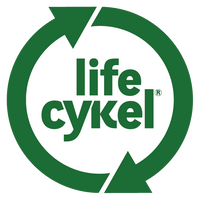Some scientific papers and websites you can use for some Mushroom Research. Enjoy!
[1] Ying, C.-C. (1989). Icons of medicinal fungi from China. Beijing, China: Science Press.
[2] Choi, J.-H. (2018). Biologically functional molecules from mushroom-forming fungi. Bioscience, Biotechnology, and Biochemistry, 82(3), pp.372–382.
[3] Lai, P.-L., Naidu, M., Sabaratnam, V., Wong, K.-H., David, R.P., Kuppusamy, U.R., Abdullah, N. and Malek, S.N.A. (2013). Neurotrophic Properties of the Lion’s Mane Medicinal Mushroom, Hericium erinaceus (Higher Basidiomycetes) from Malaysia. International Journal of Medicinal Mushrooms, 15(6), pp.539–554.
[4] Wittstein, K., Rascher, M., Rupcic, Z., Löwen, E., Winter, B., Köster, R. and Stadler, M. (2016). Corallocins A–C, Nerve Growth and Brain-Derived Neurotrophic Factor Inducing Metabolites from the MushroomHericium coralloides. Journal of Natural Products, 79(9), pp.2264-2269.
[5] Ying, C.-C. (1989). Icons of medicinal fungi from China. Beijing, China: Science Press.
[6] Friedman, M. (2015). Chemistry, Nutrition, and Health-Promoting Properties ofHericium erinaceus(Lion’s Mane) Mushroom Fruiting Bodies and Mycelia and Their Bioactive Compounds. Journal of Agricultural and Food Chemistry, 63(32), pp.7108–7123.
[7] Mori, K., Ouchi, K. and Hirasawa, N. (2015). The Anti-Inflammatory Effects of Lion’s Mane Culinary-Medicinal Mushroom, Hericium erinaceus (Higher Basidiomycetes) in a Coculture System of 3T3-L1 Adipocytes and RAW264 Macrophages. International Journal of Medicinal Mushrooms, 17(7), pp.609–618.
[8] JIANG, S., WANG, Y. and ZHANG, X. (2016). Comparative studies on extracts from Hericium erinaceus by different polarity reagents to gain higher antioxidant activities. Experimental and Therapeutic Medicine, 12(1), pp.513–517.
[9] Das, S.K., Masuda, M., Sakurai, A. and Sakakibara, M. (2010). Medicinal uses of the mushroom Cordyceps militaris: Current state and prospects. Fitoterapia, 81(8), pp.961–968.
[10] Ko and Leung. Enhancement of ATP generation capacity, antioxidant activity and immunomodulatory activities by Chinese Yang and Yin tonifying herbs. Chin Med. 2007. Department of Biochemistry, Hong Kong University of Science and Technology, Clear Water Bay, Hong Kong, China
[11] Gamage, S., Nakayama, J., Fuyuno, Y. and Ohga, S. (2018). The Effect of the Hot Water Extracts of the Paecilomyces hepiali and Cordyceps militaris Mycelia on the Growth of Gastrointestinal Bacteria. Advances in Microbiology, 08(07), pp.490–505.
[12] Kim, S.B., Ahn, B., Kim, M., Ji, H.-J., Shin, S.-K., Hong, I.P., Kim, C.Y., Hwang, B.Y. and Lee, M.K. (2014). Effect of Cordyceps militaris extract and active constituents on metabolic parameters of obesity induced by high-fat diet in C58BL/6J mice. Journal of Ethnopharmacology, 151(1), pp.478–484.
[13] Isaka, M., Chinthanom, P., Sappan, M., Supothina, S., Vichai, V., Danwisetkanjana, K., Boonpratuang, T., Hyde, K.D. and Choeyklin, R. (2017). Antitubercular Activity of Mycelium-Associated Ganoderma Lanostanoids. Journal of Natural Products, 80(5), pp.1361–1369.
[14] Cilerdzic, J., Stajic, M. and Vukojevic, J. (2016). Potential of Submergedly Cultivated Mycelia of Ganoderma spp. as Antioxidant and Antimicrobial Agents. Current Pharmaceutical Biotechnology, 17(3), pp.275–282.
[15] Wang, C.-H., Hsieh, S.-C., Wang, H.-J., Chen, M.-L., Lin, B.-F., Chiang, B.-H. and Lu, T.-J. (2014). Concentration Variation and Molecular Characteristics of Soluble (1,3;1,6)-β-d-Glucans in Submerged Cultivation Products of Ganoderma lucidum Mycelium. Journal of Agricultural and Food Chemistry, 62(3), pp.634–641.
[16] Chu, Q.-P., Wang, L.-E., Cui, X.-Y., Fu, H.-Z., Lin, Z.-B., Lin, S.-Q. and Zhang, Y.-H. (2007). Extract of Ganoderma lucidum potentiates induced sleep via a GABAergic mechanism. Pharmacology Biochemistry and Behavior, 86(4), pp.693–698.
[17] Cui, X.-Y., Cui, S.-Y., Zhang, J., Wang, Z.-J., Yu, B., Sheng, Z.-F., Zhang, X.-Q. and Zhang, Y.-H. (2012). Extract of Ganoderma lucidum prolongs sleep time in rats. Journal of Ethnopharmacology, 139(3), pp.796–800.
[18] Pallav, K., Dowd, S.E., Villafuerte, J., Yang, X., Kabbani, T., Hansen, J., Dennis, M., Leffler, D.A., Newburg, D.S. and Kelly, C.P. (2014). Effects of polysaccharopeptide from Trametes Versicolor on the gut microbiome of healthy volunteers. Gut Microbes, 5(4), pp.458–467.
[19] Yu, Z.-T., Liu, B., Mukherjee, P. and Newburg, D.S. (2013). Trametes versicolor Extract Modifies Human Fecal Microbiota Composition In vitro. Plant Foods for Human Nutrition, 68(2), pp.107–112
[20] Nachimuthu S., Kandasamy R., Ponnusamy R., Deruiter J., Dhanasekaran M., Thilagar S. (2019) L-Ergothioneine: A Potential Bioactive Compound from Edible Mushrooms. In: Agrawal D., Dhanasekaran M. (eds) Medicinal Mushrooms. Springer, Singapore
[21] Bazela, K., Solyga-Zurek, A., Debowska, R., Rogiewicz, K., Bartnik, E. and Eris, I. (2014). l-Ergothioneine Protects Skin Cells against UV-Induced Damage—A Preliminary Study. Cosmetics, 1(1), pp.51–60.
[22] Rahman, M. A., Abdullah, N., & Aminudin, N. (2016). Lentinula edodes (shiitake mushroom): An assessment of in vitro anti-atherosclerotic bio-functionality. Saudi Journal of Biological Sciences. doi:10.1016/j.sjbs.2016.01.021






